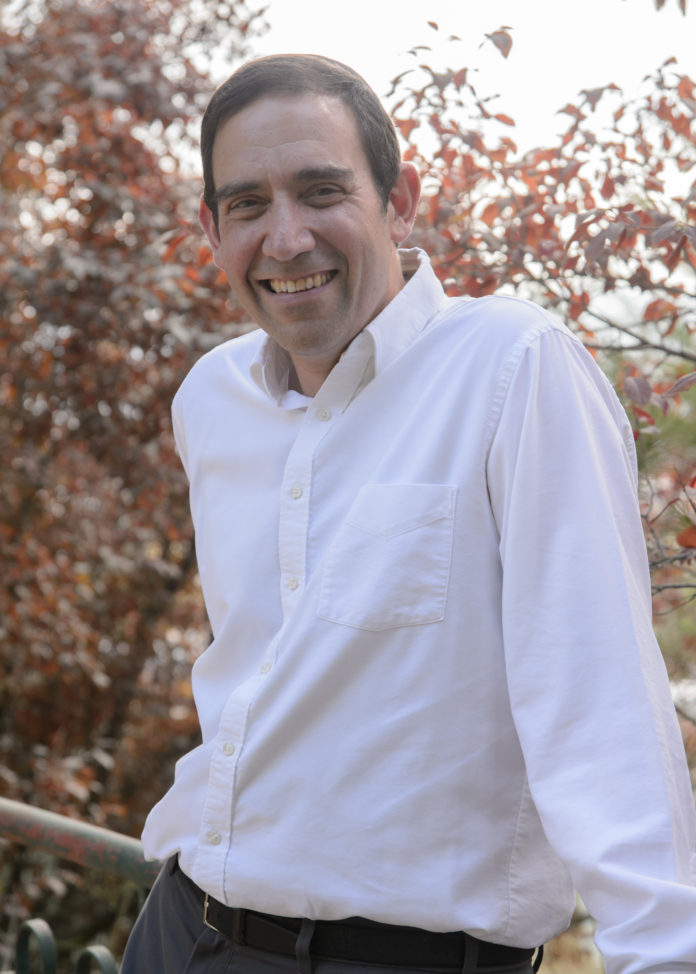
A popular hobby in Israel, and one which bridges many different societal sectors, is a hike through the land, otherwise known as a ‘tiyul’. Often, a tiyul provides fun or adventurous trekking and sometimes – depending upon the season – a tiyul may even conclude with a refreshing river waterfall or natural pool of water. Still other times, tiyulim position us in ‘sacred’ sites such as the precincts of the Mikdash and Yerushalayim. Sometimes, tiyulim include visits to the graves of our ancestors who forged our national presence in the country in which they lived and were often buried. Yet, a tiyul in Israel can also be meaningful, independent of the above features.
The first Israeli tiyul in history is documented in Parshat Lech Lecha. Having returned from his challenging trip to Egypt, Avraham receives the famous promise about one day obtaining the land which will extend as far as his eyes can travel. Additionally, he is informed that his children will be as numerous as the specks of dust in the earth. Having been promised the fulfilment of these two stirring prophecies, he is then instructed to tour throughout the land – ‘kum hithalech ba’aretz’. In fact, during the remainder of the parsha, we can track Avraham as he visits Chevron, approaches a mountain which will one day develop into Yerushalayim, and sojourns in the plains of Mamre (most likely to the North). Avraham journeys throughout a land which will one day house his children. What does he hope to accomplish through this journey and how can we, in part, recapture his experiences during our own tiyulim in Israel?
On a very basic level, a tiyul in Israel enables us to survey and familiarise ourselves with the actual land. Even Moshe Rabeinu, who wasn’t granted actual entry, was provided an aerial survey from his mountainous pitch in the plains of the East Bank. Discovering the various terrains and landscapes of Israel forges a deeper relationship with our Motherland. To a degree, modern travel habits have diminished our ability to deeply bond with any particular landscape. Given our resources and mobility, we rarely ‘revisit’ sites or rarely muse upon a particular landscape. We are often searching for the ‘next’ exciting travel opportunity or a new vacation place and seldom return to specific locations to both appreciate their beauty and forge an attachment to a particular area. Surveying land and deeply engaging with a terrain can create an emotional connection and a profound identification with that site. Avraham has been Divinely promised this land but currently he must personalise this priceless gift and establish a deeper association with it.
Our generation is facing a similar but slightly different challenge which is especially difficult for those who were not reared in Israel. For millennia, we have dreamed of this land but we barely know it! Even those who have a general sense of geography may not be familiar with the various flora and fauna, the mountain ridges, the magnificent craters, and stunning bodies of water which crisscross our country. During family tiyulim, I am envious of my children who are far better acquainted with this land than I will ever be. It may take a few generations for us to reacquaint ourselves with our long-forsaken homeland, but the more we bond with it, the more deeply we internalise the fact that we have been granted a tremendous privilege in being able to live in Israel. Historically, at the turn of the 20th century, tiyulim in Israel gained popularity, in part, to help build a national identity anchored to familiarity with our homeland.
However, Avraham’s expeditions aren’t merely land surveys for explorational purposes and far surpass opportunities to create a more deeply implanted identification with the land. The gemara in Bava Batra (100a) infers from Avraham’s expedition, that any land can be legally acquired by simply walking across its borders. Typically, acquiring land requires a contract (‘shetar’), payment (‘kesef’) or some capital improvement to the land (‘chazakah’). Yet, Rabbi Eliezer believed that simply walking across the land could transfer legal ownership. Halacha doesn’t adopt Rabbi Eliezer’s position and presumably, Avraham wasn’t able to acquire actual legal possession of the lands he visited. Yet, these tiyulim represented a longing for a period in which these promised lands would actually transfer to Jewish possession. Although he was unable to take actual possession, Avraham’s journeyings expressed his confidence in the fulfilment of this dream.
In our modern project of returning to Israel, we find ourselves in a similar situation. We still haven’t merited a fully-recognised sovereignty over the land which Avraham surveyed. Some of the land is still occupied by non-Jews who possess legitimate legal rights which must be respected. Our tiyulim and our travels through our country, though not affecting the current legal or international state of affairs, represent a means of establishing presence and imagining the sovereignty we are confident will soon arise.
The rise in popularity of tiyulim, particularly in Judea and Samaria in the aftermath of the 6-Day War, can certainly be connected to this longing for sovereignty and the goal of establishing our presence. After the war, we had finally returned to the hinterland of our country and the region in which Jewish History unfolded; we had returned to the Biblical corridor stretching from Beit El in the North snaking through Yerushalayim and worming its way through Beit Lechem, Chevron and winding up in Be’er Sheva in the South. Though we had returned home, this return wasn’t – and still isn’t – internationally ratified. Our travelling through these areas – though not altering the legal landscape – reinforces our historical and future sovereignty. Of course, the same is true about tiyulim in any region in Israel. Our enemies frequently remind us that they aren’t yet ready to acknowledge our presence and legitimacy in Tel Aviv or Haifa any more than they are willing to recognise our presence in Ofra or Alon Shevut. Our tiyulim – like those of Avraham – reinforce our inner conviction that one day, our legitimate rights will be sanctioned.
Avraham travelled for a third reason. After rejecting the opinion of Rabbi Eliezer that walking through land facilitates legal transfer, the gemara wonders why Avraham undertook this expedition for after all, it produced no legal effect. Explaining the purpose of the journey, the gemara asserts that his travels assisted his children in ultimately solidifying their presence. Avraham didn’t just journey through forests and river beds. He journeyed through Jewish History, imagining the future events which would unfold in these regions. As a pioneer of Jewish history, his visits created templates which shaped historical patterns. ‘Ma’aseh Avot Siman Labonim’ – (Chazal’s phrase meaning that the lives of our ancestors foreshadow our own) – doesn’t just connote that the experiences of our Avot serve as moral examples for our own lifestyles. Avraham actually generated historical trajectories and by visiting different locations, he catalysed future Jewish events.
We may not be capable of triggering historical realities in the same direct manner in which Avraham could. However, we are capable of a similar journey through history as we trek through our homeland. We are capable of remembering the heroes who demonstrated considerable self-sacrifice in order to live in a land which was Divinely promised. We can envision those who lived in this land while it was largely empty of its children and preserved a Jewish presence in our national homeland. We can share the longings of Yehuda Halevi who dreamed of caressing the stones and of an aerial survey. Our tiyulim, whilst being fun and refreshing, can simultaneously be a bonding experience with our land and with those who were devoted to it.
Walk Through Your Land – For You Are Home!









